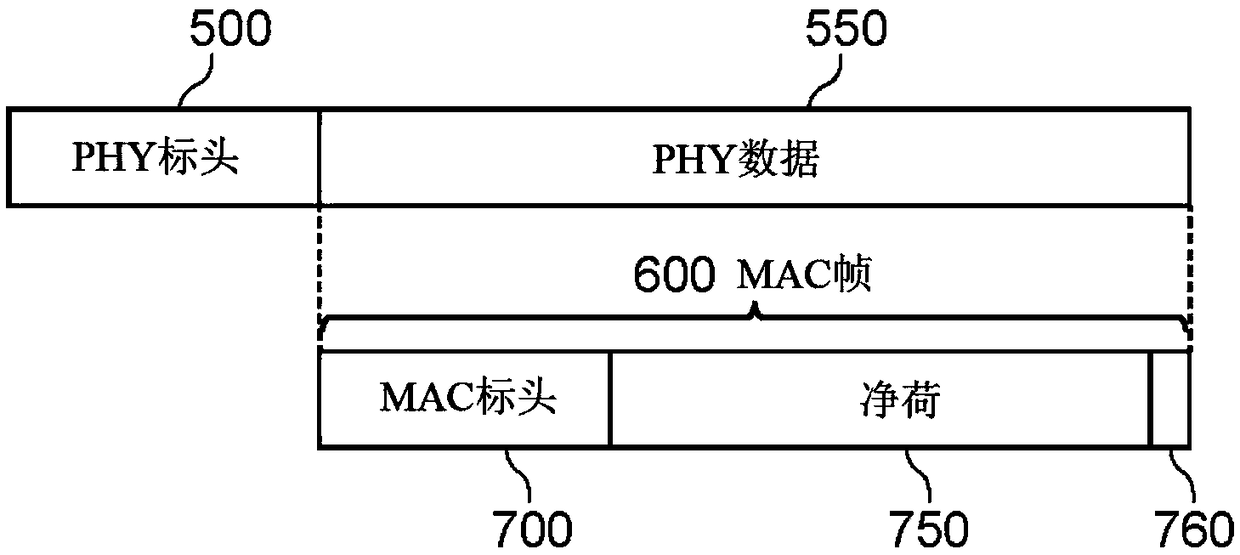Wireless communication apparatus and wireless communication method
A wireless communication device and information bit technology, applied in the direction of using the return channel for error prevention/detection, digital transmission system, and error prevention, etc., can solve the difficulty of parity part synthesis, and cannot fully utilize the function of HARQ error correction, etc. problem, to achieve the effect of improving the error correction rate
- Summary
- Abstract
- Description
- Claims
- Application Information
AI Technical Summary
Problems solved by technology
Method used
Image
Examples
no. 1 Embodiment approach
[0094] image 3 It is a block diagram showing the functions of the wireless communication device 1 according to this embodiment. The wireless communication device 1 includes a transmission block 10 , a reception block 20 , a control unit 30 , and a wireless unit 40 .
[0095] The transmission block 10 includes a frame division unit 100, a block coding unit 101, a coded frame generation unit 102, a frame aggregation unit 103, a PHY header generation unit 104, a transmission unit 105, and a transmitted data storage unit 106. Encode and transmit the generated send packet data.
[0096] The processing in each block may be performed by software (program) operating on a processor such as a CPU, may be performed by hardware, or may be performed by both software and hardware. In addition, the processing in each block may be performed by analog processing, may be performed by digital processing, or may be performed by both analog processing and digital processing.
[0097] The frame...
no. 2 Embodiment approach
[0151] In the above-mentioned embodiment, the generation example of transmission packet data in the HARQ of the CC method is mainly used, but not only the CC method but also the IR method by inserting padding is effective in improving signal reception sensitivity. Hereinafter, the case of the IR method will be described.
[0152] In the case of the IR method, in the retransmission frame, part or all of the parity bits are regenerated in the redundantly coded bit string. In such a case, for example, the encoding in the retransmission frame is performed in the same manner as that of the initial transmission frame, and the encoding rate is lower than that of the initial transmission frame, that is, encoding with an increased number of error correction bits is used.
[0153] use Figure 7 The flow chart of , will describe the coding related to this embodiment. The same processing as that in the first embodiment is performed for the coding of the initial transmission packet or th...
no. 3 Embodiment approach
[0160] In each of the above-mentioned embodiments, it has been described that data of other frames are not included in the same block when generating codewords by inserting padding bits so that the blocks have the same size, and the boundary between the transmitted frames and the The boundaries of codewords are consistent, but this embodiment will further improve communication efficiency.
[0161] Figure 11 It is a diagram schematically showing the PHY data 550 of the transmission packet according to this embodiment. Should Figure 11 send with Image 6 The data in the equivalent data. Will Image 6 and Figure 11 For comparison, codewords 801, 802, 803, 805 are the same, but in Image 6 codewords 804, 806 and Figure 11 There are differences in the codewords 804', 806' of .
[0162] The codewords 804 and 806 directly store stuffing bits as a transmission frame, but the codewords 804' and 806' do not include stuffing bits, and are configured with an information bit st...
PUM
 Login to View More
Login to View More Abstract
Description
Claims
Application Information
 Login to View More
Login to View More - R&D
- Intellectual Property
- Life Sciences
- Materials
- Tech Scout
- Unparalleled Data Quality
- Higher Quality Content
- 60% Fewer Hallucinations
Browse by: Latest US Patents, China's latest patents, Technical Efficacy Thesaurus, Application Domain, Technology Topic, Popular Technical Reports.
© 2025 PatSnap. All rights reserved.Legal|Privacy policy|Modern Slavery Act Transparency Statement|Sitemap|About US| Contact US: help@patsnap.com



